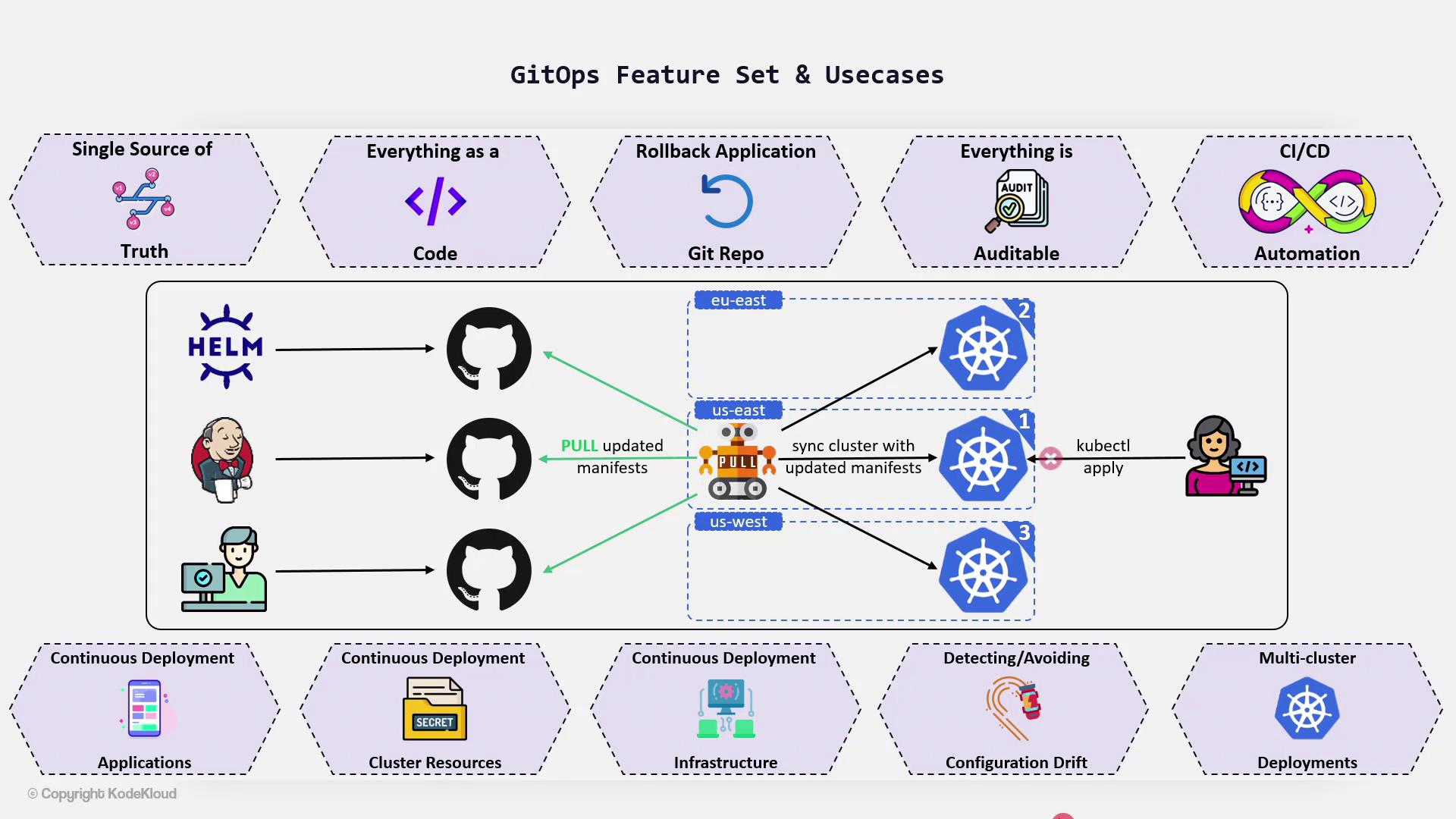GitOps with ArgoCD
GitOps Introduction
GitOps Feature Set
This article provides an in-depth overview of GitOps features and their associated use cases, demonstrating how storing every configuration declaratively in a Git repository can transform your deployment workflows.
Every configuration is stored declaratively in Git, which serves as the single source of truth containing the full desired state of the system. This approach not only simplifies application rollbacks—enabling a quick recovery with a simple git revert—but also ensures that audit trails are automatically available through pull requests and commit histories.
Key Benefit
Storing configurations in Git allows teams to effortlessly rollback to a previous state and maintain a complete audit trail for all changes.
Automated CI/CD and Continuous Deployment
CI/CD automation is a cornerstone of GitOps. By leveraging automation:
- Building, testing, and deployment tasks are triggered automatically based on the desired state stored in Git.
- Continuous deployment becomes seamless and consistent, as applications are deployed automatically to clusters without manual intervention.
Extending GitOps to Infrastructure and Cluster Resources
Once GitOps is established for application deployment, extend these practices to manage both cluster resources and Infrastructure as Code. For instance, in Kubernetes environments, you can manage various resources including:
- Secrets management
- Networking agents and service mesh configurations
- Database provisioning
- Prometheus monitoring
The core principle here is automatic reconciliation: the system continuously compares the desired state in Git with the actual state in the cluster. If any unintended changes occur, the system automatically reverts them, ensuring consistency.
Automatic Reconciliation
GitOps continuously compares Git’s desired state against the actual runtime state and reverts any drift, maintaining alignment across your infrastructure.
Detecting and Preventing Configuration Drift
Early detection of configuration drift is a fundamental aspect of GitOps. Identifying drift as soon as it happens allows teams to resolve inconsistencies before they evolve into significant issues. This proactive stance distinguishes GitOps from other deployment methodologies.
Multi-Cluster Deployment Made Easy
Managing multiple clusters, especially across different geographical locations, can be challenging. GitOps simplifies this process by centralizing cluster state within Git. This means:
- A single operator can deploy applications across multiple clusters.
- There is no need to install or set up the operator individually on each cluster.
- The deployment process is streamlined and significantly more efficient.

For more details on deploying and managing resources with GitOps, explore additional resources such as:
By leveraging GitOps, teams can achieve high levels of deployment efficiency, improved management across diverse environments, and robust recovery mechanisms, making it an essential strategy for modern infrastructure management.
Watch Video
Watch video content